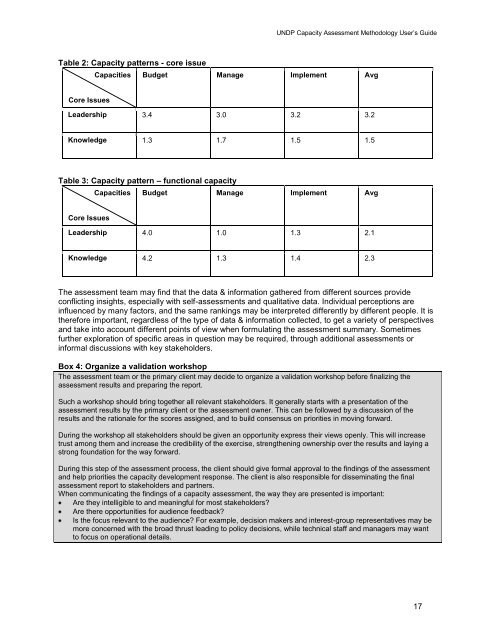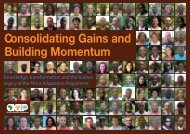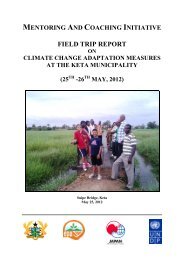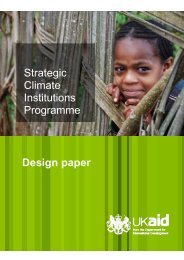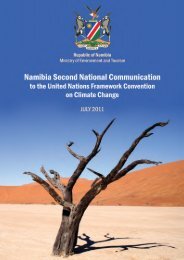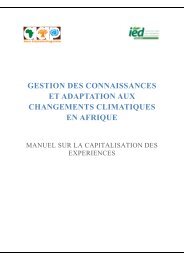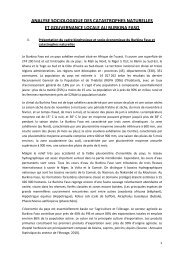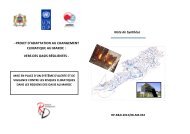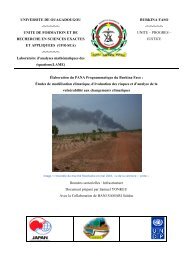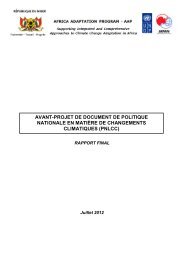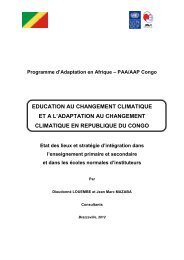UNDP Capacity Assessment Users Guide.pdf - Africa Adaptation ...
UNDP Capacity Assessment Users Guide.pdf - Africa Adaptation ...
UNDP Capacity Assessment Users Guide.pdf - Africa Adaptation ...
You also want an ePaper? Increase the reach of your titles
YUMPU automatically turns print PDFs into web optimized ePapers that Google loves.
<strong>UNDP</strong> <strong>Capacity</strong> <strong>Assessment</strong> Methodology User‘s <strong>Guide</strong>Table 2: <strong>Capacity</strong> patterns - core issueCapacitiesBudget Manage Implement AvgCore IssuesLeadership 3.4 3.0 3.2 3.2Knowledge 1.3 1.7 1.5 1.5Table 3: <strong>Capacity</strong> pattern – functional capacityCapacitiesBudget Manage Implement AvgCore IssuesLeadership 4.0 1.0 1.3 2.1Knowledge 4.2 1.3 1.4 2.3The assessment team may find that the data & information gathered from different sources provideconflicting insights, especially with self-assessments and qualitative data. Individual perceptions areinfluenced by many factors, and the same rankings may be interpreted differently by different people. It istherefore important, regardless of the type of data & information collected, to get a variety of perspectivesand take into account different points of view when formulating the assessment summary. Sometimesfurther exploration of specific areas in question may be required, through additional assessments orinformal discussions with key stakeholders.Box 4: Organize a validation workshopThe assessment team or the primary client may decide to organize a validation workshop before finalizing theassessment results and preparing the report.Such a workshop should bring together all relevant stakeholders. It generally starts with a presentation of theassessment results by the primary client or the assessment owner. This can be followed by a discussion of theresults and the rationale for the scores assigned, and to build consensus on priorities in moving forward.During the workshop all stakeholders should be given an opportunity express their views openly. This will increasetrust among them and increase the credibility of the exercise, strengthening ownership over the results and laying astrong foundation for the way forward.During this step of the assessment process, the client should give formal approval to the findings of the assessmentand help priorities the capacity development response. The client is also responsible for disseminating the finalassessment report to stakeholders and partners.When communicating the findings of a capacity assessment, the way they are presented is important:Are they intelligible to and meaningful for most stakeholders?Are there opportunities for audience feedback?Is the focus relevant to the audience? For example, decision makers and interest-group representatives may bemore concerned with the broad thrust leading to policy decisions, while technical staff and managers may wantto focus on operational details.17


